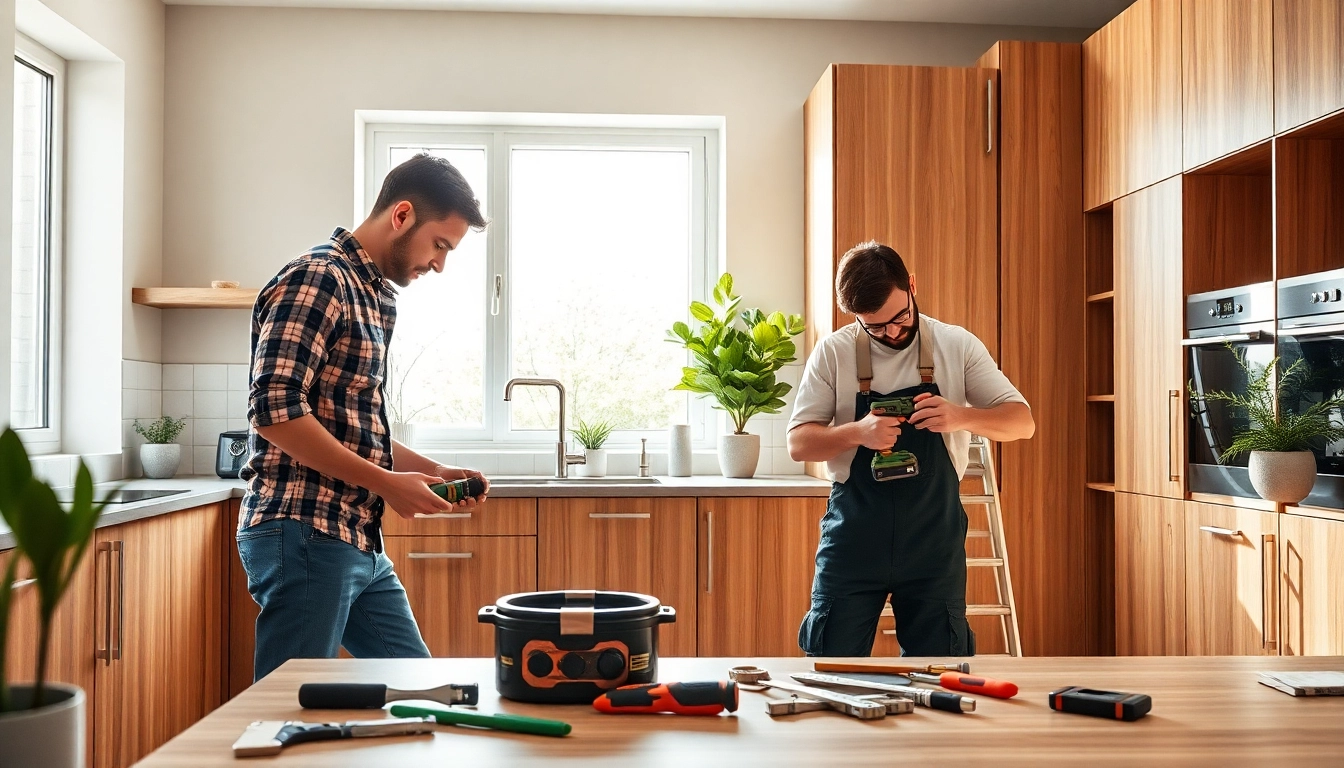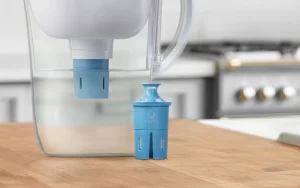Expert Kitchen Fitters: The Ultimate Guide to Transforming Spaces in 2023

Understanding the Role of Kitchen Fitters
When embarking on a kitchen renovation project, finding experienced kitchen fitters can make the daunting task of transforming your space into a culinary haven much simpler. Kitchen fitters specialize in installing and assembling kitchen units, ensuring that every aspect—from cabinetry to kitchen appliances—meets both aesthetic and functional expectations.
What Do Kitchen Fitters Do?
Kitchen fitters are skilled tradespeople who perform a range of tasks that center around the installation of kitchen units and fixtures. Their responsibilities include:
- Removing existing kitchen units and fixtures.
- Measuring and assessing the space for new units.
- Installing cabinetry, countertops, and appliances.
- Ensuring proper plumbing and electrical connections where necessary.
- Finalizing installations to guarantee aesthetic appeal and functionality.
Overall, kitchen fitters serve as the bridge between design intent and practical implementation, ensuring that every element of the kitchen is installed correctly and efficiently.
Essential Skills of a Kitchen Fitter
Success as a kitchen fitter necessitates a blend of technical skills and soft skills. Key skills include:
- Technical Knowledge: Understanding construction standards, plumbing, and electrical systems.
- Precision and Attention to Detail: Ensuring that installations are accurate and meet specifications.
- Problem-Solving: Addressing unexpected issues that may arise during the installation process.
- Communication: Effectively liaising with clients to ensure their vision is realized.
- Time Management: Completing installations within set timelines to keep projects on schedule.
The combination of these skills enables kitchen fitters to deliver high-quality results consistently.
Common Challenges Faced by Kitchen Fitters
Working in the kitchen fitting trade presents unique challenges, such as:
- Site Limitations: Often, kitchen spaces can have irregular dimensions, requiring creative solutions.
- Coordination: Engaging with various contractors can create communication gaps, leading to potential delays.
- Changing Design Trends: Keeping up with the latest styles, materials, and technologies can be demanding.
- Client Expectations: Balancing client visions with practical installation outcomes necessitates tact and expertise.
However, with professional experience, many kitchen fitters develop strategies to manage these challenges effectively.
Choosing the Right Kitchen Fitters for Your Project
Finding the right kitchen fitter for your project is critical to ensure a successful and seamless installation. Here are key steps to effectively choose the right professional.
How to Find Reputable Kitchen Fitters
Consider the following strategies to identify skilled and trustworthy kitchen fitters in your area:
- Word of Mouth: Ask friends or family for recommendations of kitchen fitters they have worked with successfully.
- Online Reviews: Check platforms like Yelp, Google Reviews, or specialist websites like MyBuilder to gain insights into past client experiences.
- Professional Associations: Look for kitchen fitters who are affiliated with recognized organizations or hold relevant certifications.
- Quotes and References: Request quotes from multiple fitters and ask for references to gauge their reliability and quality of work.
Key Questions to Ask Potential Fitters
When interviewing potential kitchen fitters, ask the following questions to better understand their competencies:
- What is your experience with kitchen fitting? Can you provide examples of similar projects you’ve completed?
- Are you fully insured and licensed to perform kitchen installations?
- How do you handle unexpected issues during the installation process?
- What is included in your quote, and do you offer warranties on your work?
- Can you provide references from previous clients?
Evaluating Kitchen Fitter Reviews and Ratings
Once you have gathered potential options for kitchen fitters, assessing their reviews is imperative. Pay attention to:
- Overall Rating: Higher ratings typically suggest better service and customer satisfaction.
- Detailed Feedback: Look for specific comments about punctuality, professionalism, and quality of work.
- Response to Complaints: Evaluate how the fitter responds to criticism—it gives insight into their customer service standards.
By taking the time to conduct proper research, you can engage a kitchen fitter who will meet and exceed your expectations.
The Kitchen Fitting Process Explained
Understanding the kitchen fitting process helps you prepare for the journey ahead. Below is a step-by-step breakdown of what to anticipate:
Initial Consultation and Assessment
The first stage involves an initial meeting where the kitchen fitter assesses your space and discusses your vision. During this consultation:
- The fitter will measure the kitchen to ensure all new elements fit properly.
- You will outline your preferences regarding design, functionality, and budget.
- The fitter may provide suggestions based on your needs and contemporary trends.
This stage is crucial for setting realistic expectations and creating a cohesive plan.
Design Planning with Your Kitchen Fitters
Once the consultation is complete, the next step involves designing the kitchen space. Key points to consider during this phase include:
- Layouts: Explore various kitchen layouts that maximize space and functionality.
- Material Selection: Choose durable materials that align with your aesthetic vision and budget.
- Appliance Locations: Decide on where appliances will be situated to enhance accessibility and usability.
This phase serves to visualize the finished kitchen and provide a roadmap for installation.
Installation Steps and Timelines
Kitchens are typically fitted in a systematic manner comprising several steps:
- Preparation: Clearing the workspace and ensuring all tools and materials are readily available.
- Cabinet Installation: Fitting cabinets is usually the first step, establishing the structure of your kitchen.
- Countertop and Backsplash Installation: Following the cabinets, countertops are placed, ensuring a seamless fit.
- Appliance Fitment: Installing appliances according to kitchen design while ensuring service connections are in place.
- Final Touches: This includes adjustments, quality checks, and cleaning the area to present the dazzling new kitchen.
Timelines for installation can vary depending on kitchen complexity, but a standard kitchen typically takes a few days to complete.
Cost Considerations for Hiring Kitchen Fitters
Understanding the financial aspects of hiring kitchen fitters is essential for effective budgeting. Various factors influence costs across different kitchens and projects.
Average Rates for Kitchen Fitting Services
The cost of hiring a kitchen fitter can vary widely based on experience, location, and project specifics. On average, homeowners might pay:
- £250 to £350 per day, depending on the fitter’s expertise.
- For a complete kitchen fitting job, expect to pay between £2,000 and £6,000.
- Kitchen worktop fitting can range between £300 and £1,000.
Obtaining detailed quotes from multiple fitters will help ensure that you get the best service for your investment.
Factors Influencing Kitchen Fitting Costs
Several elements can affect the final cost of kitchen fitting, including:
- Kitchen Size: Larger kitchens usually incur higher labor and material costs.
- Material Quality: Selecting high-end cabinetry or appliances will increase expenses dramatically.
- Location: Cost of living differences can affect rates; urban areas tend to be more expensive.
- Job Complexity: Custom designs requiring specialized skills may demand higher rates.
Being aware of these factors allows for better planning and scheduling during your renovation.
Budgeting Tips for Your Kitchen Project
Effective budgeting can ease the financial strain of kitchen renovation. Consider the following budgeting tips:
- Set a Realistic Budget: Understanding your financial limits helps tailor the project scope to your needs.
- Prioritize Essential Elements: Focus on must-have items first to ensure functionality before aesthetics.
- Allow for Contingencies: Set aside at least 10% of your budget for unexpected costs.
- Research Material Costs: Comparing prices can help you find quality at competitive rates.
By implementing careful budgeting practices, you can ensure your kitchen project is both successful and financially viable.
Future Trends in Kitchen Fitting
As design preferences evolve, kitchen fitting professionals must stay abreast of emerging trends. Here are some noteworthy trends shaping the future of kitchen installations.
Innovative Materials and Design Elements
Emerging materials and design philosophies can significantly enhance kitchen functionalities and aesthetics:
- Smart Materials: Incorporating innovative materials that are durable and easy to maintain, such as quartz or recycled glass.
- Sustainable Design: Integrating sustainable practices such as eco-friendly cabinetry or energy-efficient appliances has become a top priority.
- Open Concept Designs: This approach encourages interconnected spaces that create an inviting social atmosphere.
As consumer preferences lean towards practicality and sustainability, kitchen fitters need to adapt to material advancements accordingly.
Eco-Friendly Practices in Kitchen Fitting
More homeowners are inclined towards environmentally responsible choices, driving the shift towards eco-friendly practices in kitchen fitting. This includes:
- Low-VOC Paints: Utilizing paints that emit fewer volatile organic compounds to improve indoor air quality.
- Energy-Efficient Appliances: Installing appliances that consume less energy and reduce utility costs.
- Reclaimed Materials: Repurposing materials to create unique, sustainable kitchen designs.
Incorporating these practices not only satisfies consumer demand but also positions kitchen fitters as advocates for sustainability.
Technology Integration in Modern Kitchen Installations
Technology plays an influential role in shaping kitchen installations, with aspects like:
- Smart Appliances: Devices that connect to the internet to offer smart operation functionalities, making cooking procedures effortless.
- Home Automation Systems: Systems that allow users to manage kitchen appliances via smartphones or voice commands.
- Virtual Reality Design Tools: Fitters can use VR tools to present kitchen designs to clients before installation, enhancing the customer experience.
As advancements emerge, kitchen fitters should embrace these technologies to elevate the quality and efficiency of their services.




